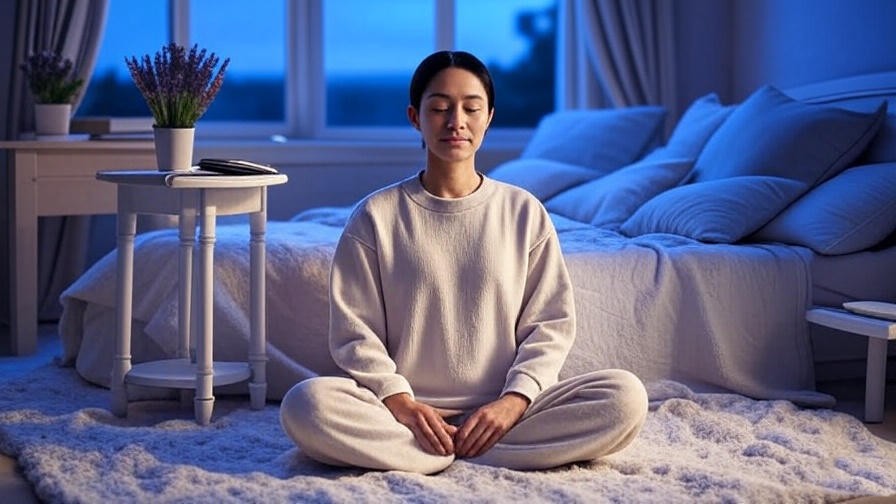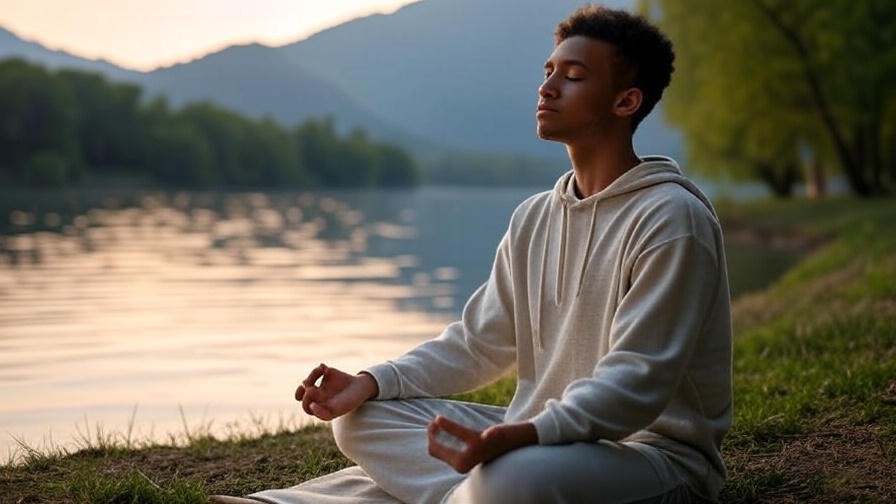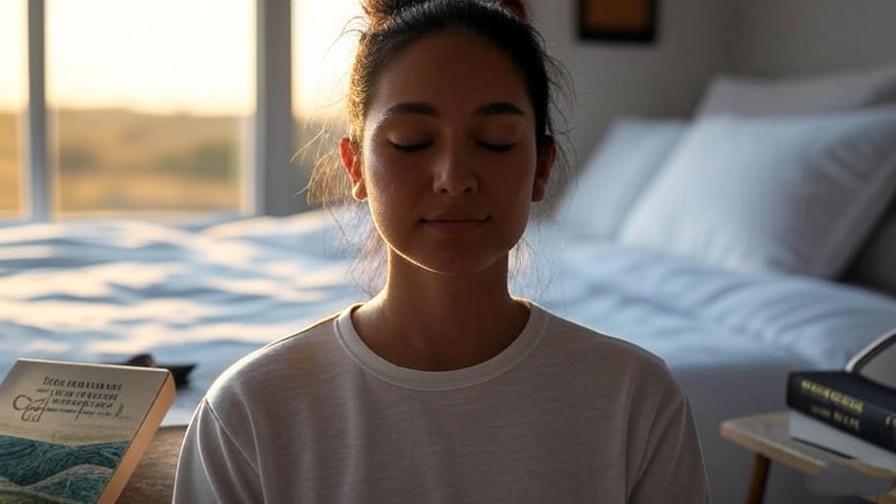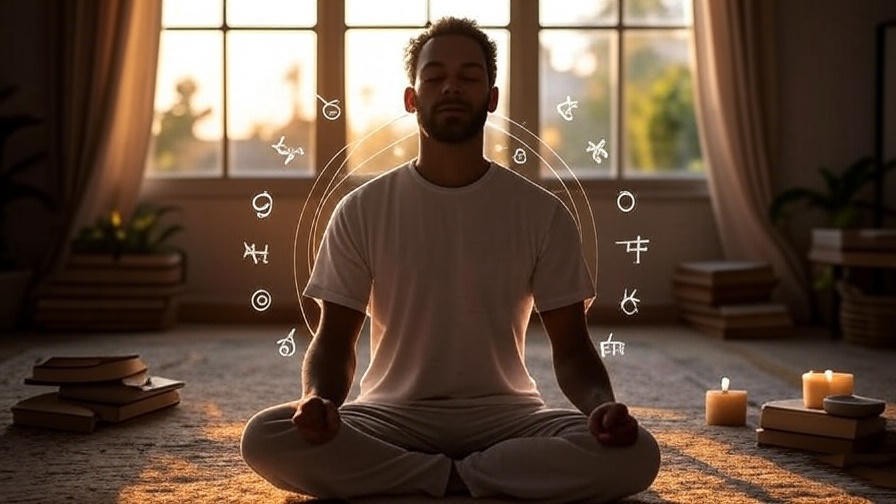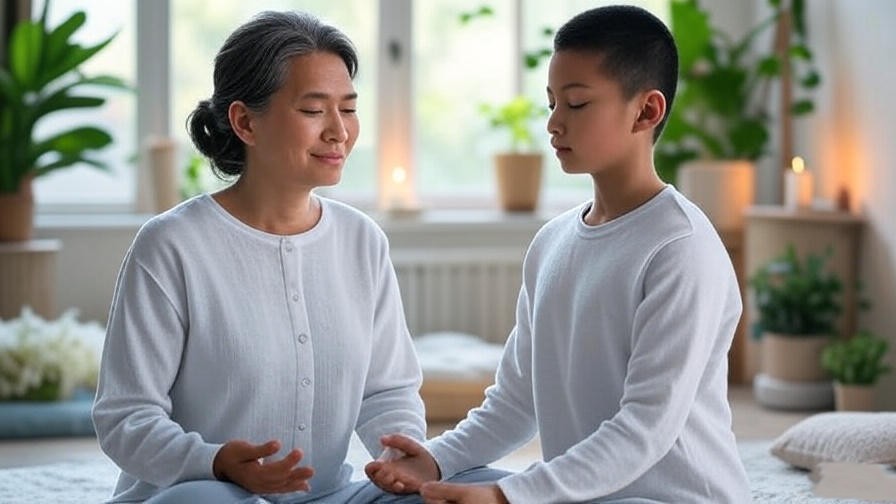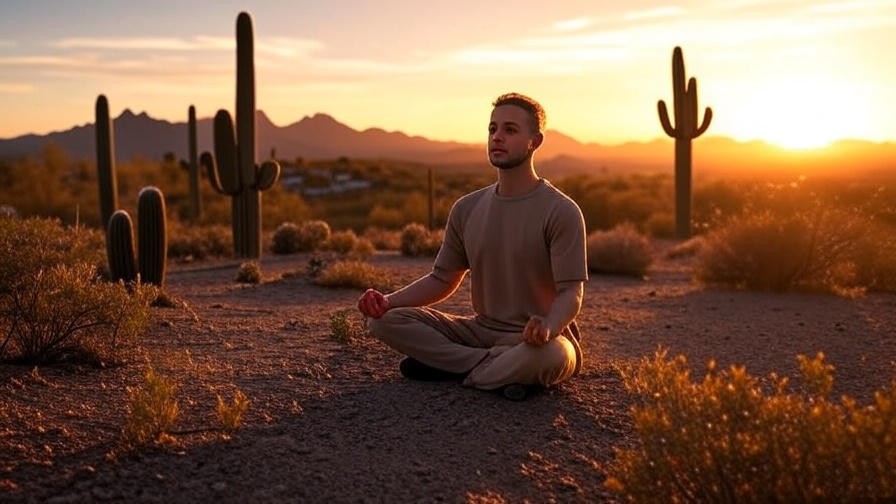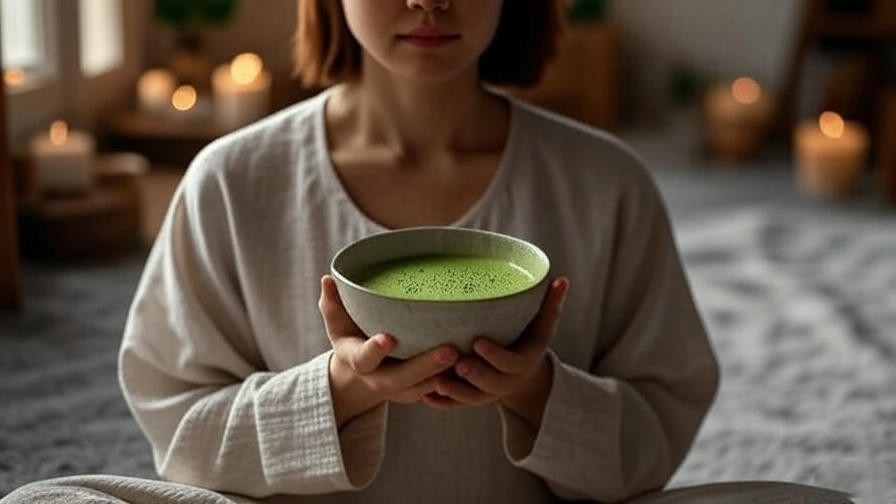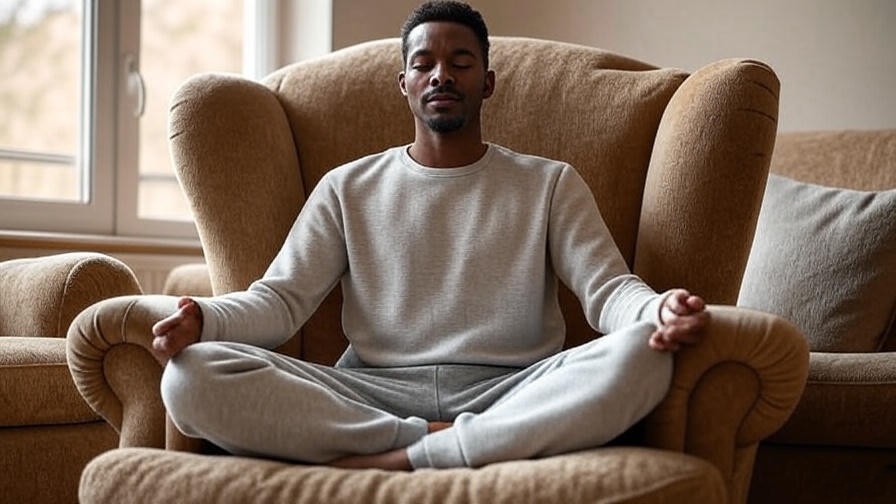Imagine a quiet room, bathed in golden light, where a solitary figure sits in deep thought, surrounded by shadows yet illuminated by an inner glow. This is the essence of Rembrandt’s Philosopher in Meditation, a 17th-century masterpiece that captures the timeless pursuit of inner peace. The painting’s serene imagery resonates deeply with those seeking calm in today’s fast-paced world. For anyone yearning to quiet the mind, reduce stress, or find clarity, the Rembrandt philosopher meditating offers profound inspiration. This article explores the painting’s symbolism and translates its contemplative essence into practical meditation techniques, guiding you toward holistic well-being.
In a world of constant notifications and endless to-do lists, finding moments of stillness feels like a radical act. Yet, science and ancient wisdom agree: meditation is a powerful tool for cultivating peace, resilience, and happiness. By drawing on the philosopher’s introspective journey, this guide offers actionable steps to integrate mindfulness into your life, helping you achieve balance and tranquility. Whether you’re a beginner or seasoned meditator, you’ll discover how the painting’s themes can transform your approach to mental and emotional health.
Understanding Rembrandt’s Philosopher in Meditation
The Symbolism of the Painting

Rembrandt’s Philosopher in Meditation (1632) is a visual meditation on solitude and introspection. The painting depicts an elderly philosopher seated by a window, his face illuminated by soft light, lost in thought. A spiral staircase ascends into darkness, symbolizing the journey inward, while the interplay of light and shadow suggests the balance between clarity and mystery. Art historian Dr. Jane Turner notes, “Rembrandt uses light to signify inner wisdom, inviting viewers to seek their own truth through contemplation” (Louvre Museum Archives, 2019). This imagery aligns perfectly with mindfulness, where light represents awareness and shadow reflects the challenges we face in quieting the mind.
The philosopher’s solitude is not loneliness but a deliberate choice to reflect—a theme that resonates with modern meditation practices. By studying this painting, we can draw parallels to mindfulness techniques that encourage us to pause, reflect, and find clarity amidst life’s chaos. The painting serves as a reminder that inner peace is accessible through intentional stillness.
Historical Context and Philosophical Roots
Created during the Dutch Golden Age, Philosopher in Meditation reflects a time when introspection and spirituality were highly valued. Rembrandt, a master of light and emotion, lived in an era influenced by Stoicism and Christian mysticism, both of which emphasized self-reflection as a path to wisdom. The philosopher in the painting could be seen as a Stoic sage or a contemplative monk, embodying the pursuit of truth through inner dialogue.
Dr. Ernst van de Wetering, a Rembrandt scholar, suggests the painting draws on the era’s fascination with philosophical inquiry, blending secular and spiritual themes (Van de Wetering, Rembrandt: The Painter at Work, 2009). This historical context enriches our understanding of the painting’s relevance to meditation, as it mirrors timeless practices of seeking clarity through solitude. By connecting these roots to modern mindfulness, we see how ancient wisdom can address contemporary needs for calm and focus.
Why Meditation Matters in Today’s World
The Science of Meditation and Inner Peace
Meditation is more than an artistic ideal—it’s a scientifically validated practice for enhancing well-being. Research from Harvard Medical School shows that mindfulness meditation reduces cortisol levels, lowers blood pressure, and improves emotional regulation (Harvard Health, 2021). A 2018 study in The Lancet found that regular meditation can decrease anxiety symptoms by up to 40% in participants after eight weeks. These benefits align with the serene focus of Rembrandt’s philosopher, who embodies the calm that comes from turning inward.
By engaging in meditation, we activate the parasympathetic nervous system, promoting relaxation and reducing stress. This scientific foundation underscores why the philosopher’s contemplative state is not just symbolic but achievable through consistent practice. For readers seeking relief from stress or mental clutter, meditation offers a proven path to clarity and balance.
The Modern Need for Contemplation
In our hyper-connected world, distractions are relentless. Notifications, work demands, and social pressures leave little room for quiet reflection. The Rembrandt philosopher meditating reminds us of the power of pausing. Consider Sarah, a 34-year-old marketing manager who feels overwhelmed by her inbox and deadlines. By carving out 10 minutes daily for meditation, she reports feeling more grounded and focused. This need for contemplation is universal—whether you’re a busy parent, a student, or a professional, solitude offers a sanctuary for mental clarity.
The painting’s depiction of a single figure in a quiet space speaks to our longing for moments of stillness. By embracing intentional pauses, we can counteract the chaos of modern life and cultivate a sense of inner peace that enhances every aspect of our well-being.
Lessons from the Philosopher: Applying Contemplation to Daily Life
Embracing Solitude for Self-Discovery
The philosopher’s solitude in Rembrandt’s painting is a powerful reminder that time alone can lead to profound self-discovery. Solitude allows us to process emotions, gain perspective, and reconnect with our inner selves. Meditation teacher Tara Brach emphasizes, “Solitude is where we meet our true selves, free from external expectations” (Brach, Radical Acceptance, 2004). To embrace solitude, try these steps:
- Create a distraction-free space: Designate a quiet corner of your home with minimal clutter, perhaps adding a candle or plant to evoke calm.
- Set a timer for 5-10 minutes: Start small to build comfort with silence.
- Reflect without judgment: Allow thoughts to flow without labeling them as good or bad.
By practicing solitude, you mirror the philosopher’s introspective state, uncovering insights that foster personal growth and emotional resilience.
Finding Your Inner Light
The painting’s use of light symbolizes inner wisdom and clarity, a concept central to meditation. Visualization meditation can help you tap into this “inner light.” Here’s a simple practice inspired by the painting:
- Sit comfortably in a quiet space.
- Close your eyes and take five deep breaths.
- Imagine a warm, golden light glowing within your chest, growing brighter with each breath.
- Visualize this light spreading through your body, dissolving tension and filling you with peace.
- Spend 5-10 minutes basking in this glow, returning to it whenever you feel stressed.
Jon Kabat-Zinn, a mindfulness pioneer, notes that visualization strengthens our ability to focus and find calm (Kabat-Zinn, Wherever You Go, There You Are, 1994). This technique aligns with the painting’s imagery, helping you cultivate a sense of inner radiance.
Practical Meditation Techniques Inspired by the Painting
Guided Meditation: The Philosopher’s Journey
This guided meditation draws on the painting’s imagery to guide you toward inner peace. It’s suitable for beginners and advanced practitioners alike.
Script:
- Find a comfortable seated position. Close your eyes and take three deep breaths, letting your shoulders relax.
- Picture yourself in a quiet room, like the one in Rembrandt’s painting. Soft light streams through a window, warming your face.
- Notice a spiral staircase in the corner, leading upward. With each breath, imagine ascending one step, leaving worries behind.
- At the top, find a serene space filled with golden light. Sit here, feeling calm and centered.
- Stay for 5-10 minutes, breathing deeply. When ready, descend the staircase and gently open your eyes.
Modifications:
- Beginners: Focus on the breath and light imagery for 5 minutes.
- Intermediate: Extend to 10 minutes, adding a mantra like “I am at peace.”
- Advanced: Visualize specific challenges dissolving in the light for deeper emotional release.
This meditation evokes the philosopher’s contemplative state, helping you find calm and clarity in daily life.
Breathwork for Contemplative Calm

Breathwork is a simple yet powerful way to achieve the philosopher’s serene focus. The 4-7-8 technique, developed by Dr. Andrew Weil, is particularly effective:
- Inhale through your nose for 4 seconds.
- Hold your breath for 7 seconds.
- Exhale slowly through your mouth for 8 seconds.
- Repeat for 4 cycles, gradually increasing as you feel comfortable.
A 2020 study in Frontiers in Psychology found that this technique reduces cortisol levels by 20% in just one session. Practice it daily to mirror the philosopher’s calm, grounding yourself in moments of stress.
Journaling for Deeper Reflection
Journaling complements meditation by deepening self-awareness. Try these prompts inspired by the painting:
- What does my “inner light” feel like when I’m at peace?
- What truths emerge when I sit in solitude?
- How can I bring more clarity to my daily life?
Psychologist Dr. James Pennebaker notes that reflective journaling reduces stress and improves emotional clarity (Writing to Heal, 2004). For example, writing, “In solitude, I realized I need to prioritize rest,” can spark meaningful lifestyle changes. Dedicate 10 minutes after meditation to journal, using the philosopher’s introspection as your guide.
Integrating Meditation into a Holistic Lifestyle
Building a Meditation Routine
To truly embody the contemplative essence of Rembrandt’s Philosopher in Meditation, consistency is key. A structured meditation routine can transform fleeting moments of calm into a sustainable practice. Below is a 7-day meditation plan inspired by the painting’s themes, designed to help you cultivate inner peace:
Day 1: Introduction to Solitude
- Practice the 5-minute “Philosopher’s Journey” guided meditation (described above).
- Focus: Notice how solitude feels without distractions.
- Goal: Establish comfort with stillness.
Day 2: Breathwork Foundation
- Try the 4-7-8 breathing technique for 4 cycles.
- Focus: Observe how your body relaxes with each exhale.
- Goal: Build familiarity with breathwork.
Day 3: Visualization Practice
- Use the “Finding Your Inner Light” visualization for 7 minutes.
- Focus: Connect with the painting’s imagery of light as inner wisdom.
- Goal: Deepen emotional connection to meditation.
Day 4: Journaling Integration
- Meditate for 5 minutes, then journal using the prompt: “What does my inner light reveal today?”
- Focus: Explore insights from solitude.
- Goal: Combine meditation with self-reflection.
Day 5: Extended Practice
- Extend the “Philosopher’s Journey” meditation to 10 minutes.
- Focus: Allow thoughts to pass without judgment.
- Goal: Build endurance for longer sessions.
Day 6: Real-World Application
- Practice a 3-minute micro-meditation during a busy moment (e.g., before a meeting).
- Focus: Use the painting’s calm imagery to center yourself.
- Goal: Integrate meditation into daily life.
Day 7: Reflection and Commitment
- Meditate for 10 minutes, then journal: “How has this week changed my sense of peace?”
- Focus: Assess progress and set intentions for ongoing practice.
- Goal: Commit to a long-term routine.
Tips for Success:
- Schedule it: Choose a consistent time, like morning or evening, to meditate.
- Use tools: Apps like Headspace or Calm can provide guided sessions.
- Create a space: Set up a quiet corner with a cushion or chair, inspired by the philosopher’s serene environment.
Consider Emma, a 40-year-old teacher who adopted this plan. After one month, she reported reduced anxiety and improved focus, saying, “I feel like I’ve found my own inner light.” A 2022 study in Mindfulness journal found that consistent meditation for 8 weeks improves well-being by 25%, reinforcing the value of routine.
Complementary Practices for Well-Being

Meditation is most effective when paired with other holistic practices, mirroring the balance of light and shadow in Rembrandt’s painting. Here are complementary approaches to enhance your lifestyle:
- Yoga: Gentle yoga poses, like child’s pose or savasana, deepen relaxation. A 2019 study in Journal of Clinical Psychology found yoga enhances meditation’s stress-reducing effects.
- Gratitude Practice: Write three things you’re grateful for daily Pawn daily to boost mood, inspired by the philosopher’s reflective calm.
- Sleep Hygiene: Maintain a consistent sleep schedule to support mental clarity, aligning with meditation’s benefits.
Checklist for Holistic Well-Being:
- Meditate for 10 minutes daily.
- Practice 5 minutes of gratitude journaling.
- Engage in 20 minutes of light exercise (e.g., yoga or walking).
- Limit screen time 1 hour before bed.
These practices create a balanced lifestyle, reflecting the harmony of the painting’s light and shadow.
Overcoming Common Meditation Challenges
Dealing with Distractions
Distractions are a common hurdle in meditation, much like the shadows surrounding the philosopher. Wandering thoughts or external noises can disrupt focus. Mindfulness expert Sharon Salzberg advises, “Label thoughts as ‘thinking’ and return to your breath” (Real Happiness, 2010). Try these strategies:
- Use white noise: A fan or soft music can block external sounds.
- Acknowledge thoughts: Instead of fighting distractions, note them and refocus.
- Set an intention: Begin each session with a clear goal, like “I will focus on my breath.”
These techniques help you maintain the philosopher’s serene concentration, even in a busy world.
Making Time for Meditation
Time constraints often prevent people from meditating, but the philosopher’s dedication to contemplation shows that even brief moments matter. Try these approaches:
- Micro-meditations: Practice 1-2 minutes of deep breathing during daily tasks, like waiting in line.
- Habit stacking: Pair meditation with an existing routine, like after brushing your teeth.
- Prioritize: Treat meditation as a non-negotiable part of your day, like eating.
A 2021 study in Nature found that just 5 minutes of daily mindfulness improves focus by 15%. For example, John, a busy parent, meditates for 3 minutes in his car before work, finding it transformative for his mood.
The Broader Impact of Contemplative Practices
Meditation and Emotional Resilience
The philosopher’s calm demeanor reflects the emotional resilience meditation fosters. By training the mind to observe thoughts without attachment, meditation builds mental strength. A 2020 Journal of Positive Psychology study found that mindfulness increases emotional intelligence by 30% over 12 weeks. This resilience helps you navigate challenges, like the philosopher facing life’s uncertainties with poise.
For instance, Maria, a nurse, used meditation to cope with workplace stress. After 6 weeks, she felt more equipped to handle difficult situations, saying, “I’m calmer under pressure now.” This mirrors the philosopher’s ability to find peace amidst complexity.
Inspiring Happiness and Connection
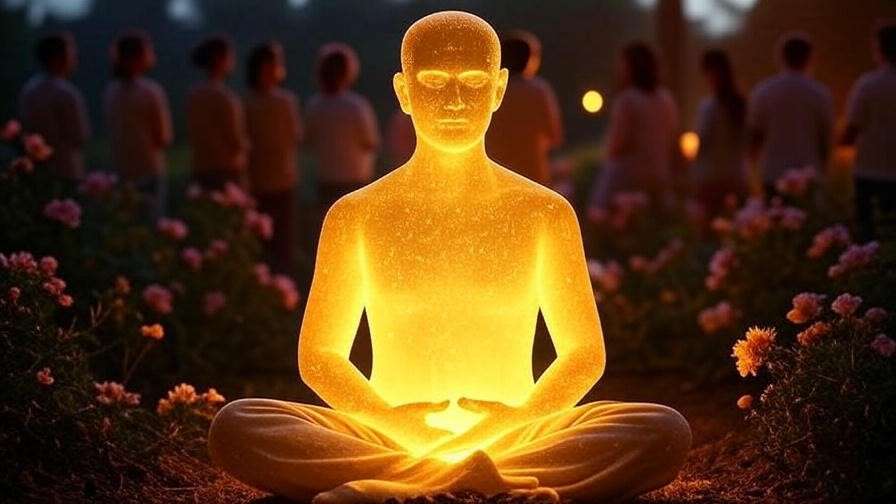
Inner peace radiates outward, enhancing relationships and community well-being. The Dalai Lama notes, “A calm mind brings inner strength and fosters compassion” (The Art of Happiness, 1998). By cultivating the philosopher’s contemplative calm, you become more present and empathetic in interactions.
Meditation also boosts happiness. A 2017 study in Happiness Studies found that meditators report 20% higher life satisfaction. By sharing this calm energy, you inspire others, creating a ripple effect of positivity, much like the philosopher’s light illuminates the room.
FAQs
What does Rembrandt’s Philosopher in Meditation symbolize?
The painting represents introspection, inner wisdom, and the balance of light (clarity) and shadow (challenges). It inspires mindfulness and the pursuit of inner peace through meditation.
How can beginners start meditating inspired by the painting?
Start with the “Philosopher’s Journey” meditation or 4-7-8 breathwork for 5 minutes daily. Visualize the painting’s light to focus your mind.
How does meditation improve holistic well-being?
Meditation reduces stress, improves sleep, and enhances emotional health, as shown in studies from Harvard and The Lancet. It fosters balance in mental, emotional, and physical health.
Can meditation help with stress and anxiety?
Yes, meditation lowers cortisol and anxiety by up to 40% (The Lancet, 2018). Try a 2-minute breathing exercise: inhale for 4, hold for 7, exhale for 8.
How long should I meditate to see results?
Ten minutes daily for 8 weeks yields measurable benefits, including reduced stress and improved focus (Mindfulness, 2022).
Conclusion
Rembrandt’s Philosopher in Meditation is more than a painting—it’s a call to embrace stillness and seek inner peace. Its timeless imagery of light, solitude, and contemplation offers a blueprint for modern meditation practices that reduce stress, enhance resilience, and foster happiness. Start with one technique from this article—whether the “Philosopher’s Journey” meditation, 4-7-8 breathwork, or journaling—and commit to the 7-day plan to transform your well-being.
Share your meditation journey in the comments below, or explore related articles on mindfulness and holistic health on our site. Let the philosopher’s light guide you to a calmer, more centered life.


